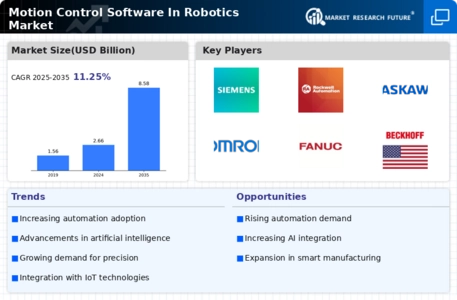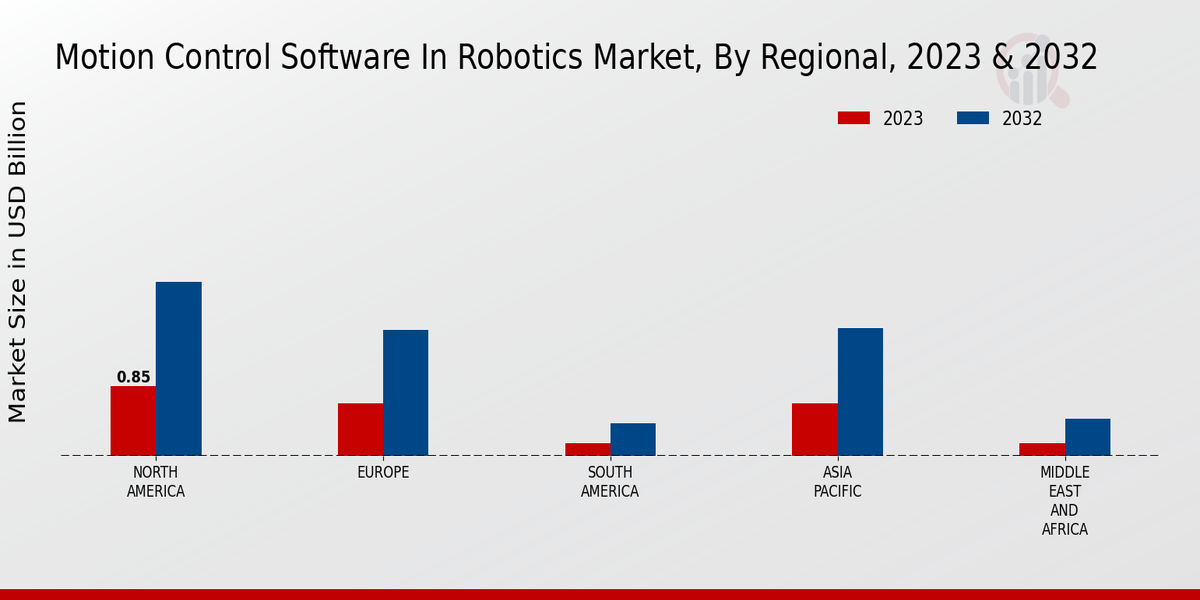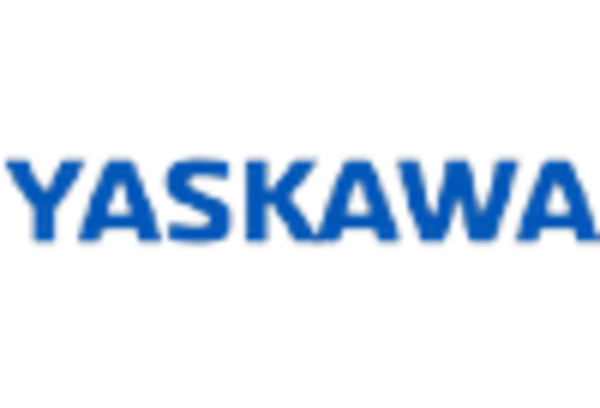Increasing Demand for Automation
The Motion Control Software In Robotics Market is experiencing a surge in demand for automation across various sectors, including manufacturing, healthcare, and logistics. As industries strive for enhanced efficiency and productivity, the adoption of robotics is becoming more prevalent. According to recent data, the automation market is projected to grow at a compound annual growth rate of approximately 10% over the next five years. This trend indicates a robust need for sophisticated motion control software that can facilitate precise and reliable robotic operations. Companies are increasingly investing in automation technologies to reduce operational costs and improve output quality, thereby driving the growth of the Motion Control Software In Robotics Market.
Advancements in Robotics Technology
Technological advancements in robotics are significantly influencing the Motion Control Software In Robotics Market. Innovations such as improved sensors, enhanced processing capabilities, and advanced algorithms are enabling robots to perform complex tasks with greater accuracy and efficiency. The integration of these technologies is expected to propel the market forward, as businesses seek to leverage cutting-edge solutions for competitive advantage. For instance, the introduction of collaborative robots, or cobots, which can work alongside humans, is creating new opportunities for motion control software applications. This evolution in robotics technology suggests a promising future for the Motion Control Software In Robotics Market.
Need for Enhanced Safety and Compliance
Safety and compliance regulations are becoming more stringent across industries, driving the demand for advanced motion control software in the Motion Control Software In Robotics Market. Companies are increasingly required to adhere to safety standards to protect workers and ensure operational integrity. This necessity is prompting organizations to invest in motion control solutions that not only enhance the safety of robotic operations but also ensure compliance with regulatory requirements. The market is witnessing a shift towards software that incorporates safety features and compliance tracking, indicating a growing awareness of the importance of safety in robotics. This trend is expected to significantly influence the Motion Control Software In Robotics Market.
Rising Adoption of Robotics in Healthcare
The healthcare sector is increasingly adopting robotics for various applications, which is positively impacting the Motion Control Software In Robotics Market. Robotics is being utilized for surgical procedures, rehabilitation, and patient care, enhancing precision and efficiency in healthcare delivery. The market for medical robotics is projected to reach several billion dollars in the coming years, driven by the need for improved patient outcomes and operational efficiency. As healthcare providers seek to integrate robotic solutions, the demand for specialized motion control software tailored to medical applications is likely to rise, further propelling the Motion Control Software In Robotics Market.
Growing Investment in Research and Development
Investment in research and development is a critical driver for the Motion Control Software In Robotics Market. Companies are allocating substantial resources to innovate and enhance their motion control solutions, aiming to meet the evolving needs of various industries. This focus on R&D is likely to yield new software capabilities that improve the performance and adaptability of robotic systems. Recent statistics indicate that R&D spending in the robotics sector has increased by over 15% in the past year, reflecting a strong commitment to advancing motion control technologies. Such investments are expected to foster growth and innovation within the Motion Control Software In Robotics Market.


















Leave a Comment